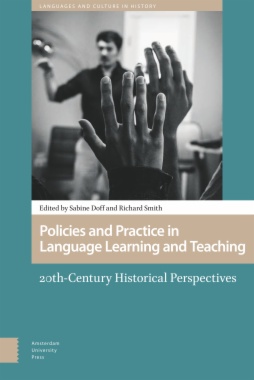This book brings together studies from Georgia, Germany, Italy, Japan, New Zealand, Poland, South Korea, and the UK which explore links between policy and practice in language teaching in the twentieth century. The 14 contributions set out to expand the remit of ‘grounded history’ within the field of History of Language Learning and Teaching (HoLLT) by focusing on language teaching policies and linking these to practices and to contexts, situating policy formulation in particular contexts on the one hand, and exploring the relationship between policy and practice on the other. In this sense, the book shows how the theories, policy pronouncements, curricula, textbooks, and overall teaching approaches which tend to feature in most histories of language teaching always emerge from particular, researchable contexts, and, in the other direction, are interpreted and responded to in practice, again, in particular contexts. In this way, we hope to contribute a context-based perspective that highlights diversity of practices, in opposition to received views that language teaching methodology is ‘universal’ and context-free.
- Cover
- Table of Contents
- I. INTRODUCTION
- 1. Valorizing Practice in Twentieth-century Language Learning and Teaching
- Sabine Doff and Richard Smith
- II. CONTENT
- 2. Ovid’s Metamorphoses Are Read Everywhere!?
- Historical Remarks on a Classical Text in Latin Teaching in Germany
- 3. Teaching Schiller
- Philological Discourse and Educational Practice at Schools of Higher Education in the German Kaiserreich—The Example of Wallenstein
- 4. Writing about German Literature
- Examination and Text Forms in the French Occupation Zone, 1945–1949
- III. METHOD
- 5. Practice Escaping an Ideological Grip
- How the CLT Agenda Slipped through the Cracks of Error Taxonomies
- 6. “Teachers May Feel that They Should …”
- Attempts to Align the Intended and the Taught Curriculum in 1980s Bremen Manuals for Communicative Language Teaching
- 7. The Quest for Communicative Competence in Foreign Language Learning in English Schools, 1968–2010
- 8. Teaching English Writing in the Twentieth Century Seen through Handbooks for Mother-tongue and Foreign Speakers
- Laura Pinnavaia and Annalisa Zanola
- IV. AIMS
- 9. ‘Too Much Workload in Technical Schools!’
- Luigi Pavia and the Teaching of English in Italian Technical Schools on the Threshold of the Twentieth Century
- 10. Yoshisaburô Okakura and the Practical Value of the Study of English in Secondary Schools in Early Twentieth-century Japan
- 11. The British Juggernaut
- ESP Practice and Purpose in the 1970s
- V. CONTEXT
- 12. Sociocultural, Political, and Educational Aspects of Teaching English in Polish Schools in the Interwar Period (1918–1939)
- 13. English as a Foreign Language in Georgia
- From Past to Present
- Ekaterine Shaverdashvili and Nino Chkhikvadze
- 14. Language Teacher Education Improvements Would Valorize Practice
- A Recent History of Intercultural Language Teaching in Aotearoa/New Zealand
- 15. Social Attitudes toward ‘School English’ in Classroom Practice in South Korea from 1970 to the Present
- Index

